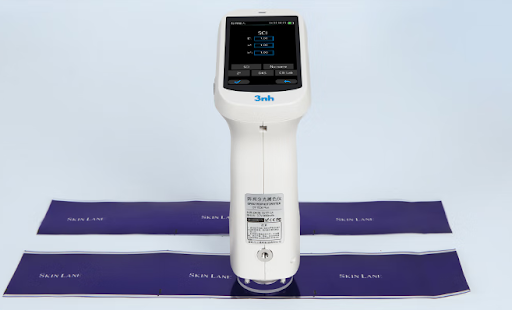In today’s fast-paced industries—whether it’s printing, textiles, plastics, or paints—achieving consistent and precise color is a top priority. Customers demand uniformity, and businesses know that color mistakes can quickly damage trust and brand value. To ensure accuracy, professionals rely on Digital Color Standards, well-defined Color Standards, and effective color control strategies. If you’re looking to get the best results in your work, here are some expert tips to help you along the way.
1. Understand the Importance of Color Standards
Before diving into color control, it’s essential to understand why Color Standards matter so much. These standards act as benchmarks, ensuring that every product created, no matter when or where, matches the intended color. For example, a fabric dyed in one factory must look identical to fabric produced in another. By using Digital Color Standards, businesses can share precise data electronically, reducing human error and ensuring consistency across production lines and even global supply chains.
Color Expert Tip:
Always align your production workflow with a recognized Color Standard system. Whether it’s Pantone, RAL, or custom brand guidelines, consistency starts with universally agreed-upon references.
2. Invest in Reliable Color Measurement Tools
Visual assessment alone is never enough to ensure color accuracy. Human eyes perceive shades differently depending on lighting conditions, fatigue, or even personal bias. That’s why color-measuring devices such as colorimeters and spectrophotometers are essential. These devices work hand-in-hand with Digital Color Standards to measure and quantify exact shades.
Color Expert Tip:
Calibrate your color measurement instruments regularly. Routine calibration ensures that the data you gather remains accurate and in line with industry-approved Color Standards.
3. Implement Strong Color Control Processes
Having tools and standards is just the first step. The real difference lies in setting up robust color control procedures across the entire workflow. From the design stage to raw material selection, production, and final inspection, color must be monitored consistently. Even minor variations in dyes, lighting, or printing conditions can lead to noticeable mismatches.
Color Expert Tip:
Create checkpoints at different stages of production. For instance, test colors during early samples and again in final production runs. This proactive approach ensures problems are caught early rather than after thousands of products have been made.
4. Embrace Digital Color Standards for Global Collaboration
In a connected world, companies often operate in multiple countries or outsource production. Sending physical color swatches back and forth is time-consuming and prone to error. Here, Digital Color Standards play a critical role. They allow companies to exchange precise numerical data instantly, ensuring a shared understanding of the target shade without relying on physical samples.
Color Expert Tip:
When working with multiple vendors or facilities, always insist on using the same Digital Color Standards to eliminate discrepancies. This ensures every partner is working toward the same measurable goal.
5. Train Your Team for Better Results
Even the best systems can fail if the team doesn’t fully understand them. Many color control issues arise from human error, such as misinterpreting reports or ignoring standard operating procedures. Training your staff to properly use tools, interpret measurement data, and apply standards will dramatically reduce errors.
Color Expert Tip:
Schedule regular training sessions and refreshers for employees at every level. A well-trained team is your best defense against costly color mistakes.
6. Don’t Ignore Environmental Factors
Light, temperature, and humidity can all affect how color is perceived and measured. For example, fluorescent lighting may make a shade appear different compared to natural daylight. Similarly, inconsistent production environments may cause dye uptake to vary. These environmental influences can undermine even the most carefully followed Color Standards.
Color Expert Tip:
Always conduct measurements in controlled lighting conditions, ideally using light booths designed for color evaluation. This ensures consistency when comparing results against Digital Color Standards.
7. Review and Update Standards Regularly
Markets evolve, and so do customer expectations. Relying on outdated standards can leave your products looking inconsistent compared to competitors. Regularly reviewing your Color Standards ensures they remain relevant, accurate, and in line with new industry requirements.
Color Expert Tip:
Audit your color processes annually. During this audit, verify that your Digital Color Standards are up to date and that your workflow reflects the latest industry practices.
Why Color Standards Are Essential for Your Business
A color standard is more than just a reference. It’s the agreed, measurable representation of a color that your entire production process will follow. Without defined color standards, maintaining digital color accuracy across multiple suppliers, batches, and production stages becomes nearly impossible.
Companies across industries rely on standard colors to avoid costly reworks, ensure consistent branding, and meet strict color specifications. From fabric dyes to printed labels and painted surfaces, colour standards act as a universal language of color communication between designers, manufacturers, and quality control teams.
Conclusion
Getting the best results in color accuracy requires a holistic approach. By prioritizing Color Standards, investing in reliable measurement tools, adopting Digital Color Standards, and strengthening your overall color control processes, you can minimize costly mistakes and build trust with your customers. Remember, color consistency isn’t just about aesthetics—it’s about delivering quality, building brand recognition, and ensuring customer satisfaction.
Whether you’re in printing, fashion, plastics, mim metal or any other color-critical industry, these expert tips will help you achieve unmatched results. With the right strategies in place, you’ll not only meet industry standards but also exceed customer expectations every time.








